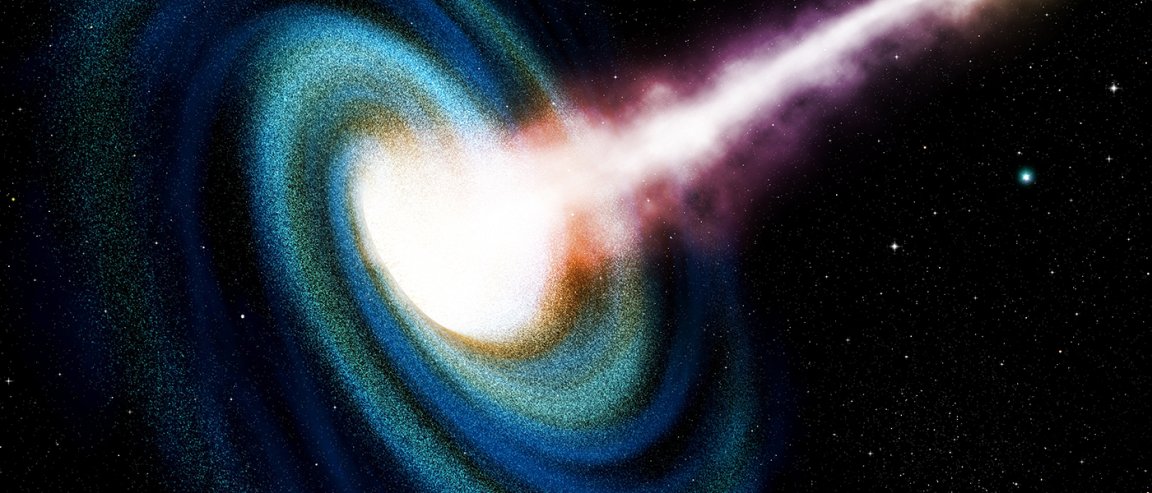
From out of the Darkness
In some ways, astronomy is a lot like time travel. Even with the best telescopes, what we see now has already happened, and in some cases, it happened billions of years ago. The radiation and other signals we pick up take so long to travel to us that the farther away the event was, the longer it takes for us to know about it. Such information can provide scientists with a window into the past, and sometimes, even give us a glimpse at the very foundations of our universe.
Recently, NASA used the Fermi Gamma-Ray Space Telescope to intercept intense gamma radiation from some far away, ancient galaxies. The galaxies formed roughly 12 billion years ago and could clue us in to how black holes formed during the universe’s (relative) infancy.
The rays come from super energetic space objects call blazars, which are compact quasars. These objects are found at the centers of active elliptical galaxies that are also home to supermassive black holes. As matter falls into these black holes, they shoot out energy, which moves nearly at the speed of light. Knowing this, we can tell from where and when the energy came.

A Deeper Look
Astronomers are excited by the prospect of studying such old black holes. “Despite their youth, these far-flung blazars host some of the most massive black holes known,” said Roopesh Ojha of NASA’s Goddard Space Flight Centre in a press release. He continued, “That they developed so early in cosmic history challenges current ideas of how supermassive black holes form and grow, and we want to find more of these objects to help us better understand the process.”
Tools such as the Fermi Space Telescope are allowing scientists to reach deeper into space than ever before. Subsequently, that means that we are able to look deeper into the universe’s past. But as with many huge discoveries, the findings present more questions than immediate answers. “The main question now is how these huge black holes could have formed in such a young universe. We don’t know what mechanisms triggered their rapid development,” said another team member, Dario Gasparrini of the Italian Space Agency’s Science Data Centre.
Given what we know about black holes, how these supermassive objects, which pump out two trillion times the energy of our Sun, were able to form is a mystery. Answers to questions like this will help us understand how the universe looked throughout its development, and maybe even what’s in store for the future. For now, NASA will continue to look for more blazars to study, as their orientation causes them to appear clearly on our high-powered equipment. According to Marco Ajello from Clemson University in South Carolina, “We think Fermi has detected just the tip of the iceberg, the first examples of a galaxy population that previously has not been detected in gamma rays.”